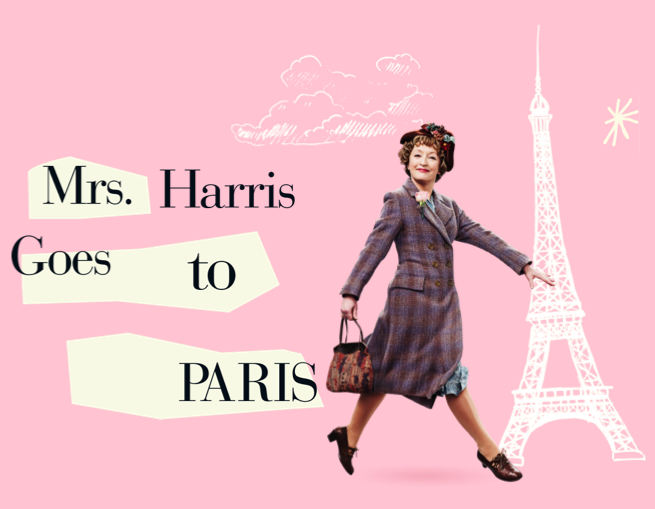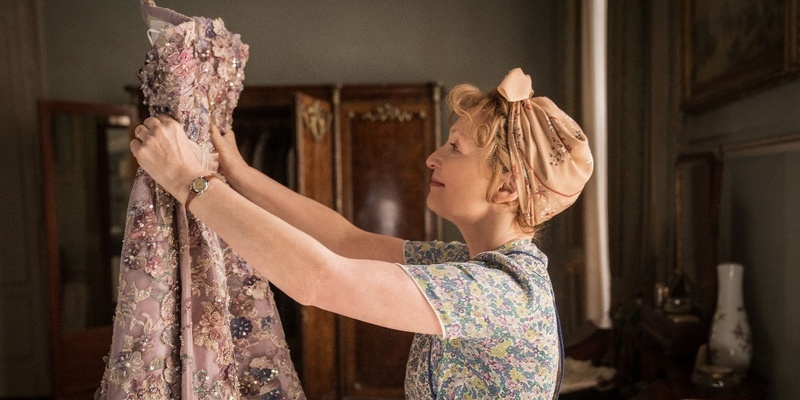
In 1958 a novel written by Paul Gallico revolutionised the depiction of fairytale heroines: Mrs. ‘Arris Goes to Paris. It was the first in a series of four books about the adventures of a London charwoman, who falls madly in love with a couture Dior dress, and decides she must have one of her own. After working to raise the funds to pursue her dream, she embarks on an adventure to Paris that will change not only her own outlook, but the very future of the House of Dior. Subsequent titles in the series were Mrs. ‘Arris Goes to New York (1960), Mrs. ‘Arris Goes to Parliament (1965), and Mrs. ‘Arris Goes to Moscow (1974).
This magical tale breaks the stigma of agism in the way fairytales seem accessible only to young women. The protagonist is an older woman, who has seemingly lived a full life; she is now a widow and seems to have no more aspirations. Yet, she whole-heartedly proves to us all there is no limit of time or place to what we can accomplish by going after what we want. The story was so successful it had many adaptations through the decades, from the musical-theatre adaptation, Flowers For Mrs Harris, to the the TV movie starring Angela Lansbury, Diana Rigg, and Omar Sharif. This year a new adaptation has been released for cinema, directed by Anthony Fabian and starring Lesley Manville in the titular role, alongside a prestigious cast with the likes of Isabelle Huppert, Jason Isaacs, Anna Chancellor, Lambert Wilson, Alba Baptista, Lucas Bravo, and Rose Williams.

Mrs. Harris Goes To Paris — that will be distributed in the US by Focus Features and by Universal Pictures internationally — is cleverly crafted, with a brilliant mishmash of period elements and contemporary themes. Besides the protagonist, majestically played by CBE Lesley Manville, the secondary characters also represent repressed dream chasers, who are liberated by this unconventionally enterprising cleaning lady from Battersea.
Mrs. Harris’ generosity back home in London — with the aspiring young actress Pamela Penrose (Rose Williams) or her friends Vi Butterfield (Ellen Thomas) and Archie (Jason Isaacs) — pays off with good karma. Serendipity works in her favour through her Parisian encounters, including the one with the Marquis de Chassagne (Lambert Wilson).

Ada Harris encourages all Dior employees to change old habits, from Claudine Colbert (Isabelle Huppert) to Marguerite (Roxane Duran), from André Fauvel (Lucas Bravo) to Natasha (Alba Baptista). She will also help the budding romance between the latter two who share a passion for Jean-Paul Sartre’s existentialism. Their discussions about the publications Being and Nothingness (L’Être et le néant ) or Nausea (La Nausée) and the philosophical concepts of Being in-itself (être-en-soi) and Being for-itself (être-pour-soi) serve as a parable for the entire story. Whereas the In-itself designates the world of physical things that is fixed and static, the For-itself, on the contrary, refers to the world of existence. Man is therefore a being for himself, who can freely determine his essence. All the characters in the story confront this crossroads in which they have to decide whether to follow a construct designed for them by society or embrace the image of themselves they aspire to.
The character and story of Mrs. Harris teaches us how we all possess that “je ne sais quoi” that makes us “ravissante.” Perhaps it isn’t the clothes that maketh the man after all — as demonstrated by a twist of fate that affects the gown made by the French luxury fashion house that Mrs. Harris had so passionately made her own. However, some frocks — especially if they are designed and tailor-made with such precision and skill by Christian Dior— can aid in making the invisible visible.
Final Grade: B+

